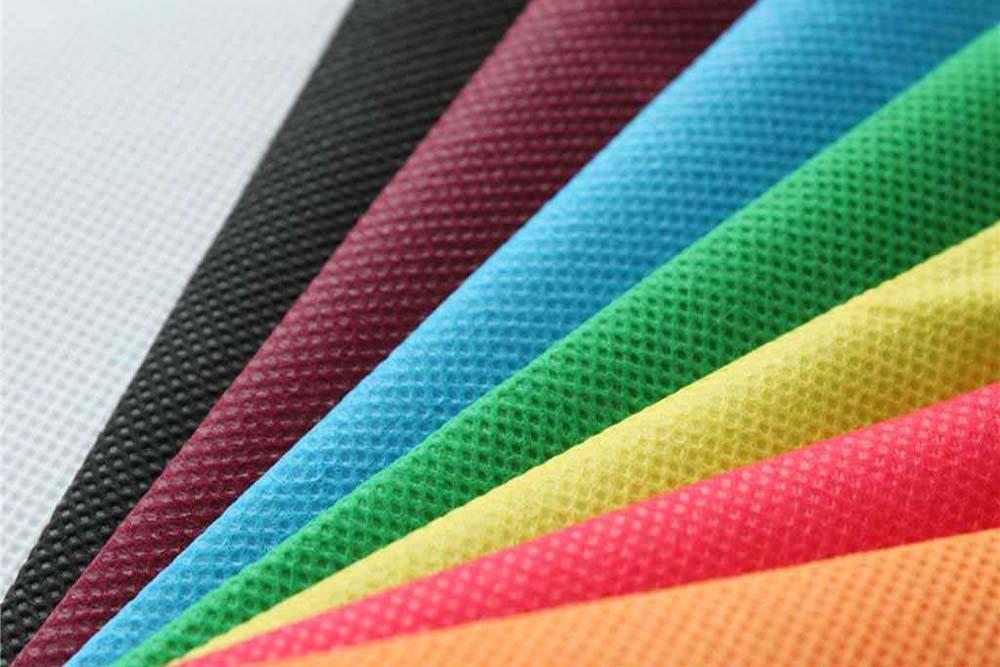Ultrasonic welding fabric is increasingly being used across various industries due to its efficiency and ability to bond materials without adhesives.
This technique is especially common in sectors where nonwoven fabrics are prevalent, such as medical, hygiene, and filtration applications. However, when it comes to ultrasonic welding of fabric, several challenges must be addressed to ensure optimal results.
This article explores the difficulties faced when welding nonwoven fabrics, particularly in the context of materials like polyester and nylon and provides insights into overcoming these challenges.
What is Ultrasonic Welding Fabric?
Ultrasonic welding fabric involves using high-frequency sound vibrations to create heat at the interface of two fabrics, causing them to fuse together. The process eliminates the need for adhesives or mechanical fasteners, making it clean, fast, and efficient.
Ultrasonic welding fabric generates these high-frequency vibrations, which then produce heat at the contact point, allowing fabrics such as nonwoven, polyester, and nylon to bond without compromising their integrity.
However, despite its many advantages, ultrasonic welding fabric poses certain technical difficulties that need to be addressed for consistent quality and efficiency, especially in nonwoven materials. Plastic welding equipment, designed specifically for such applications, can provide better control over the energy distribution during the welding process.
Challenges in Ultrasonic Welding of Nonwoven Fabrics
1. Material Variability
Nonwoven fabrics come in a variety of compositions, often including synthetic fibers like polyester and nylon, which present specific challenges in ultrasonic welding. These materials have different thermal properties, melting points, and mechanical characteristics, making it difficult to establish universal welding parameters.
Solution: Ultrasonic welding materials such as polyester fabric require particular attention to ensure proper energy distribution during welding. The welding parameters (such as time, pressure, and amplitude) should be adjusted based on the specific material to avoid weak or inconsistent bonds.
For instance, ultrasonic welding polyester fabric may require different settings compared to ultrasonic welding nylon, as each material has distinct melting points and structural properties.
2. Inconsistent Weld Strength
Achieving consistent bond strength is critical for applications in medical, hygiene, and filtration products. Variations in fabric density or composition can result in poor bonding and weak joints.
This issue is particularly common in nonwoven materials, which tend to have varying fiber orientations and porosity.
Solution: Fine-tuning the settings of the ultrasonic fabric welder is essential to achieving optimal weld strength. Properly adjusting the amplitude, welding pressure, and time can ensure a stronger bond, particularly when welding challenging materials like ultrasonic welding nylon or polyester fabrics.
It may also help to use surface treatments like plasma cleaning to improve the adhesion properties of nonwoven fabrics.
3. Thin and Variable Thickness of Fabrics
Nonwoven fabrics can vary in thickness, and thin materials are particularly difficult to weld as they may not absorb sufficient energy to form a strong bond. Uneven thickness across the fabric can lead to inconsistent welds, especially if the fabric is highly porous.
Solution: For ultrasonic welding nonwoven fabric, controlling the heat distribution carefully is necessary. For thin or lightweight materials, adjusting the ultrasonic fabric welder to use lower energy or a multi-frequency setup can help avoid over-heating or damaging the fabric.
The use of high-quality ultrasonic welding equipment that adjusts the energy output based on fabric thickness is also essential for consistent results.
4. Delamination and Distortion of Fabric
Delamination and fabric distortion are common issues in ultrasonic welding, particularly when working with nonwoven fabrics that may not tolerate high temperatures or intense vibrations. Distortion can occur due to uneven heat distribution or excessive pressure.
Solution: A gradual heat application, along with optimized cooling systems, can prevent distortion and delamination. Using adaptive systems that adjust the pressure and amplitude during welding can also help.
Moreover, by carefully calibrating the ultrasonic welding parameters for fabrics like ultrasonic welding polyester fabric or nylon, it is possible to prevent damage to the structure of nonwoven materials.
5. Welding Speed and Throughput Issues
In high-volume production environments, welding speed can be a bottleneck, particularly when working with thicker nonwoven fabrics or those with complex material properties.
Slow welding times can reduce the efficiency of the manufacturing process, especially for disposable products such as medical face masks or hygiene products.
Solution: To increase the welding speed, manufacturers can adopt high-frequency ultrasonic welding systems designed for faster energy transfer. In addition, optimized horn designs and multi-stack welding systems, which can weld multiple layers at once, can help boost production rates while maintaining the integrity of the weld.
6. Contamination and Hygiene Challenges
In medical and hygiene applications, contamination is a significant concern. Nonwoven fabrics must meet stringent standards for cleanliness and sterilization, and the ultrasonic welding process itself can generate heat-induced debris that may compromise product safety.
Solution: One way to address contamination is using automated, enclosed ultrasonic welding systems that minimize exposure to contaminants.
Additionally, regular cleaning and maintenance of the ultrasonic fabric welder can help reduce the accumulation of debris, ensuring the quality of the final product. Using specialized welding horns made of materials resistant to wear can also minimize the creation of contaminants.
7. Difficulty in Welding Thin and Delicate Nonwoven Fabrics
Thin nonwoven fabrics present unique challenges in the ultrasonic welding process. These fabrics are prone to damage from excessive heat or energy, and achieving a strong bond without damaging the material is difficult.
Solution: For ultrasonic welding nonwoven fabric, reducing the intensity of the ultrasonic energy is important. This can be achieved by adjusting the amplitude and pressure or by using specialized ultrasonic horns designed for thin fabrics.
A careful approach to controlling the energy input ensures that delicate fabrics are welded without excessive heat generation.
Solutions for Improving Ultrasonic Welding of Nonwoven Fabrics
1. Optimized Ultrasonic Welding Parameters
Adjusting the ultrasonic welding parameters for different materials is essential for high-quality results. For example, ultrasonic welding polyester fabric requires particular settings compared to more heat-resistant materials like nylon.
Manufacturers must conduct comprehensive testing to determine the ideal frequency, amplitude, and pressure for each fabric type.
2. Advanced Ultrasonic Welding Equipment
Using state-of-the-art ultrasonic fabric welders equipped with adaptive technologies can help address material variability and thickness issues.
These fabric ultrasonic welding machines can automatically adjust the power and pressure based on the fabric’s properties, ensuring consistent results even with challenging materials like ultrasonic welding nylon.
3. Pre-treatment of Nonwoven Fabrics
To improve the bonding strength and ensure better results, nonwoven fabrics can be pre-treated before the welding process. Surface treatments, such as plasma or corona treatment, increase the surface energy of the fabric, making it more receptive to bonding during the ultrasonic welding process.
4. Use of Multi-frequency Systems
Incorporating multi-frequency ultrasonic welding systems allows for better penetration and more uniform welding, especially in nonwoven fabrics that are prone to inconsistent bonding. This method helps in optimizing energy transfer and improves the strength and consistency of the welds.
5. Cooling Systems
Incorporating effective cooling mechanisms after the welding process helps maintain the integrity of the nonwoven fabric. Cooling techniques like air jets or controlled cooling plates can prevent distortion and delamination, particularly in sensitive materials like polyester and nylon.
Conclusion
Ultrasonic welding of nonwoven fabrics offers a range of benefits, including efficiency, cleanliness, and environmental friendliness. However, the process is not without its challenges, especially when working with materials like polyester, nylon, and other nonwoven fabrics.
From material variability and weak bonds to contamination and slow welding speeds, these challenges must be addressed. It’s important to adjust welding parameters carefully. Using advanced ultrasonic fabric welders can help achieve the best results.
Keep an eye for more news & updates on Bangkok Tribune!



